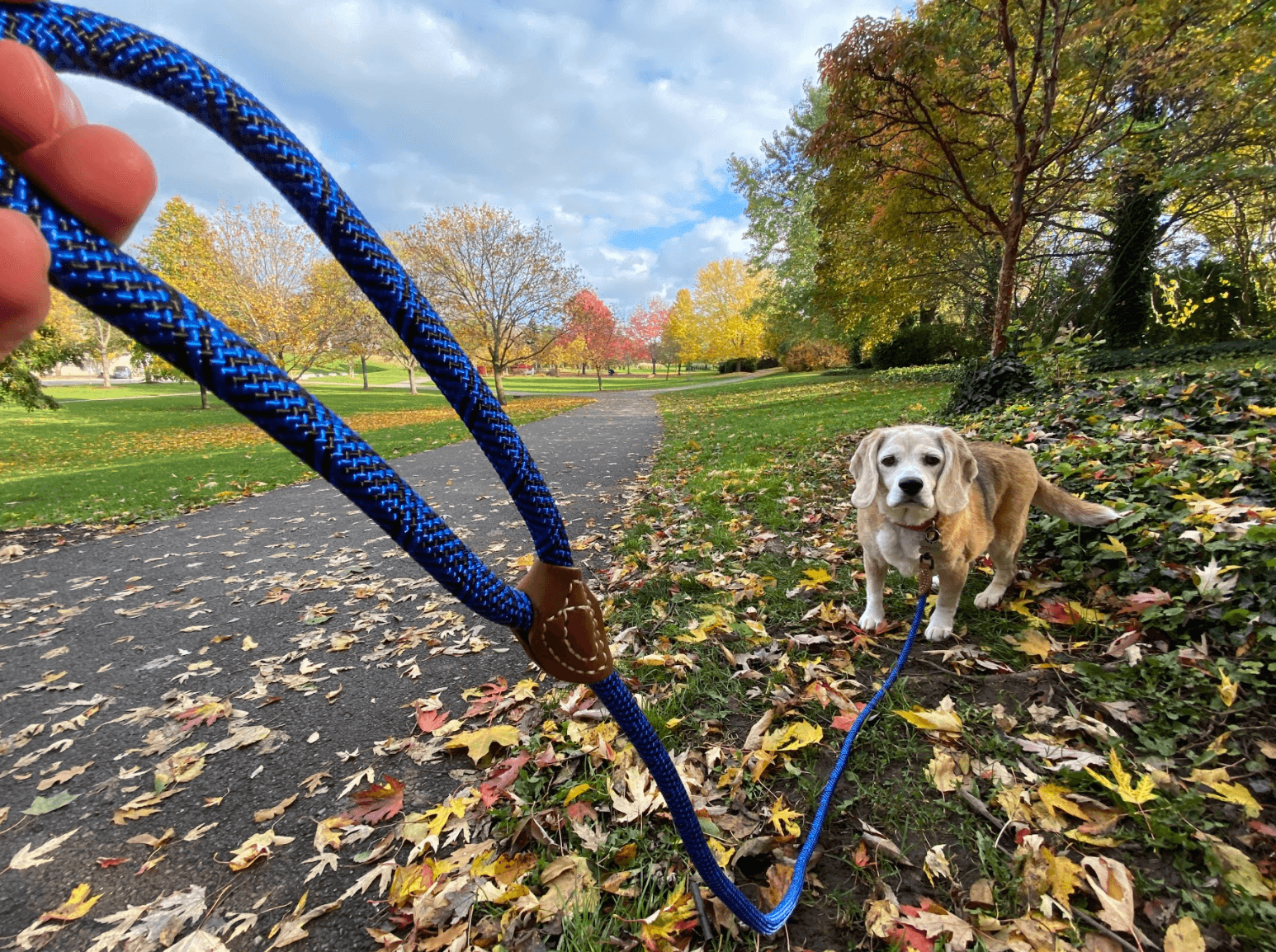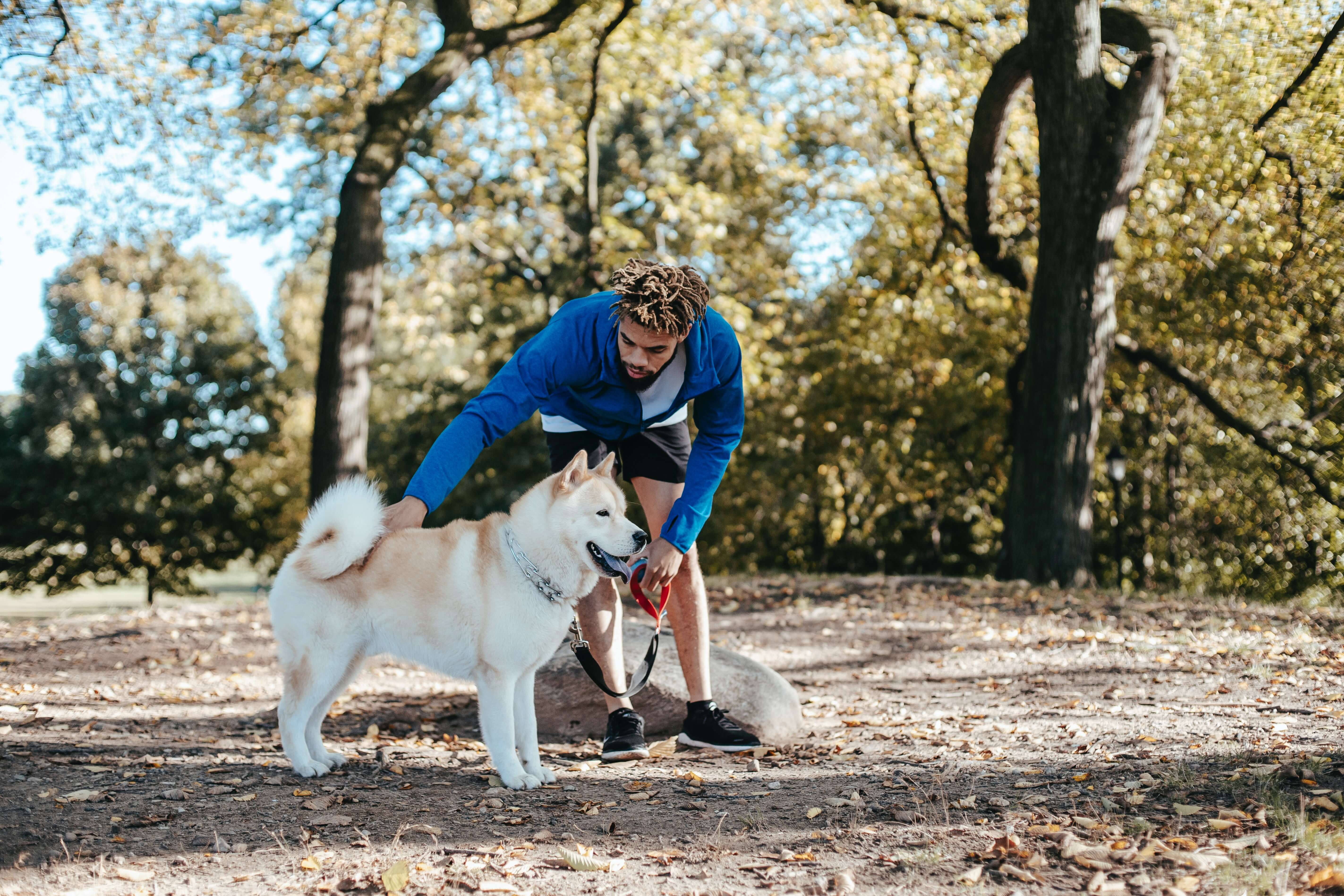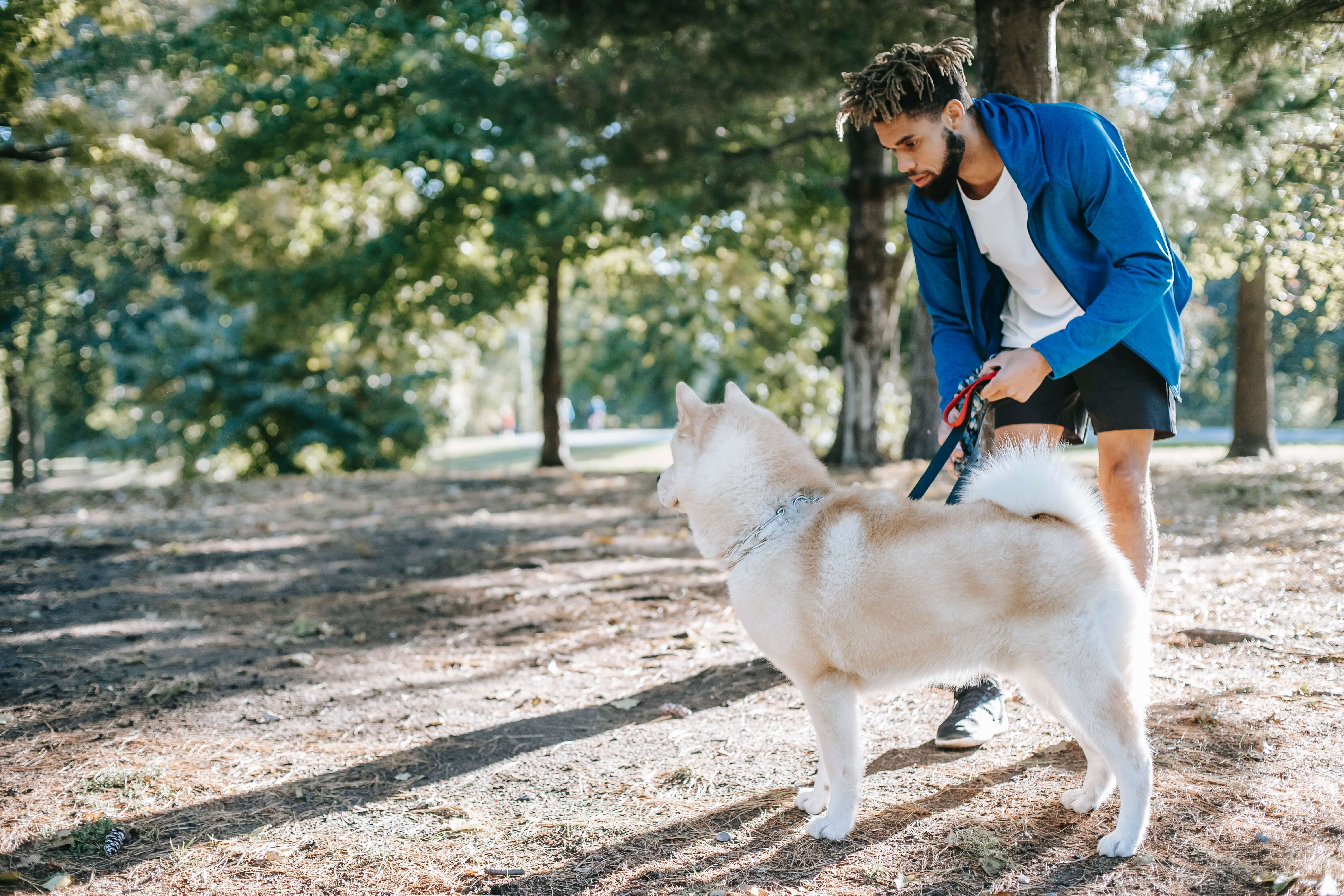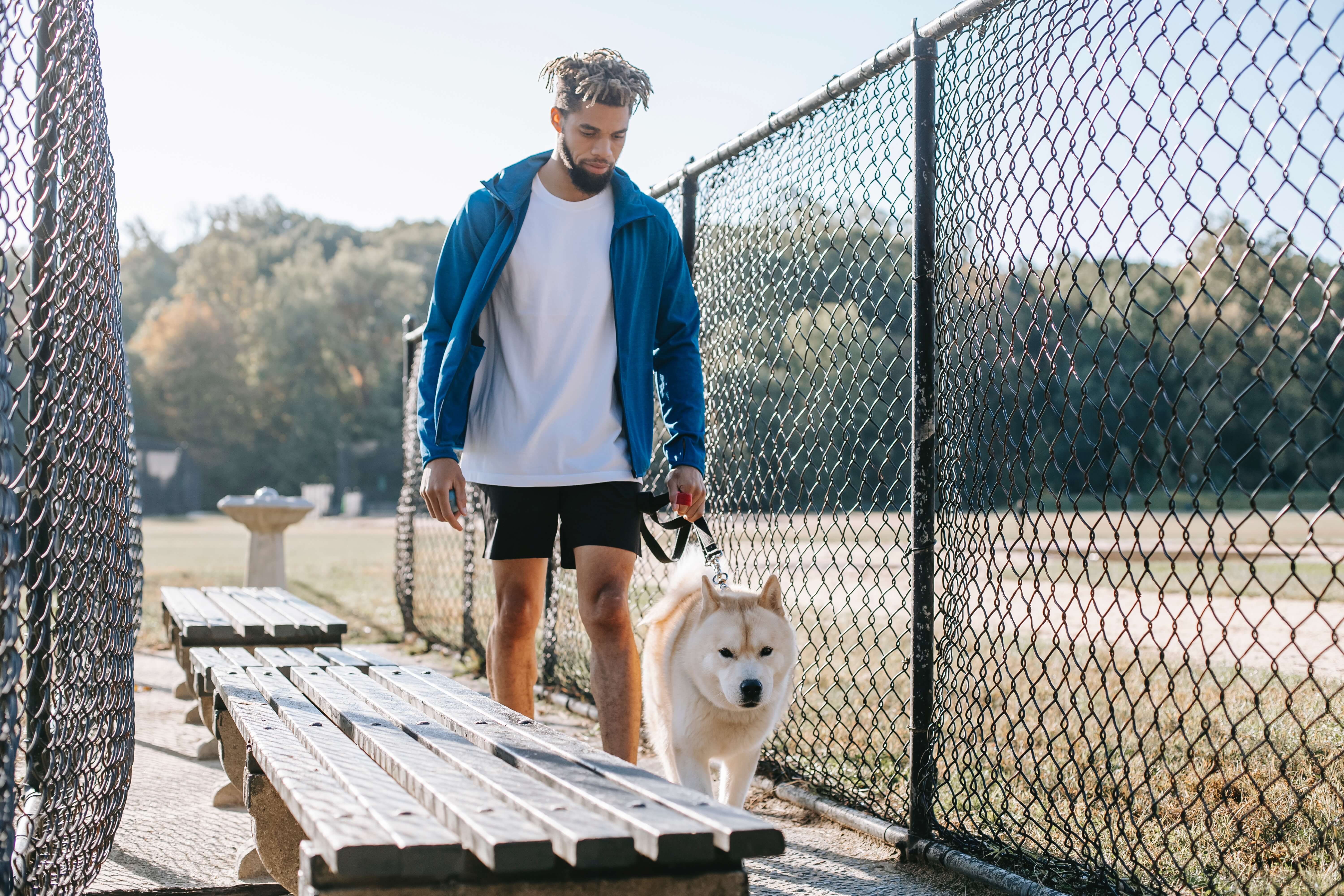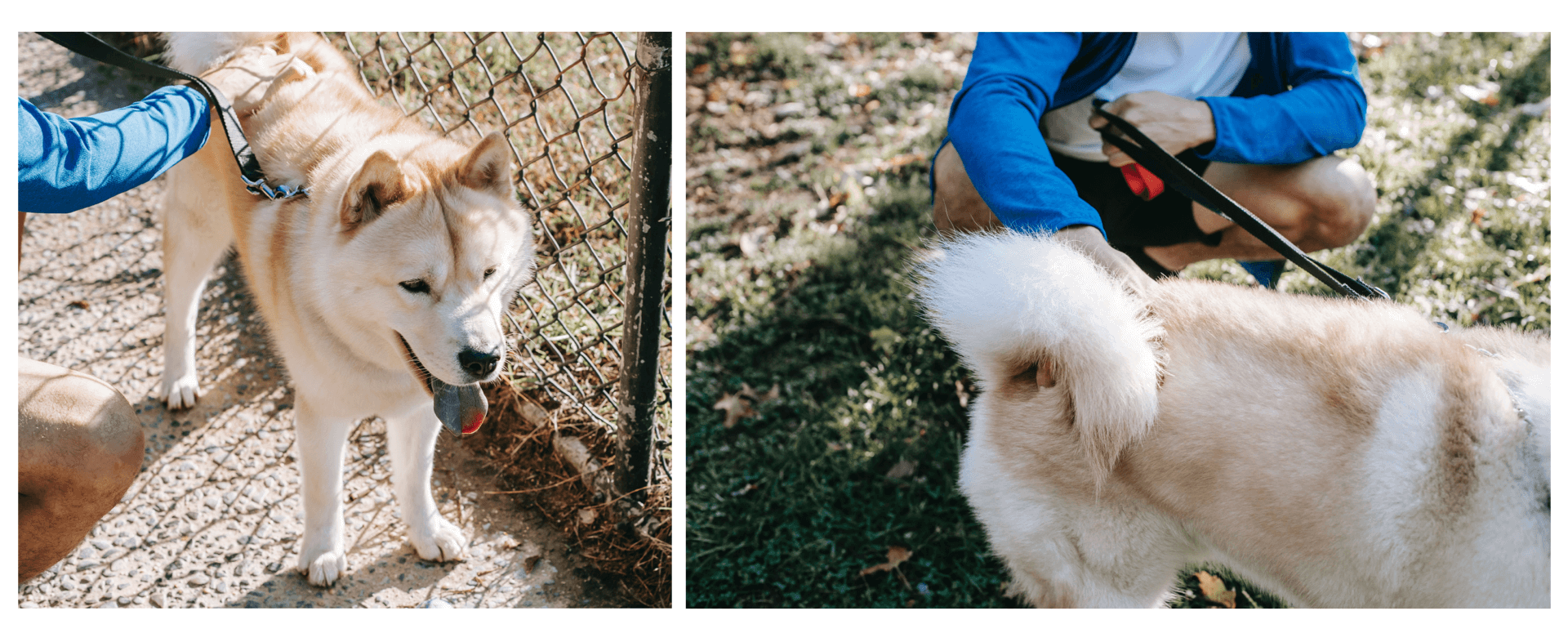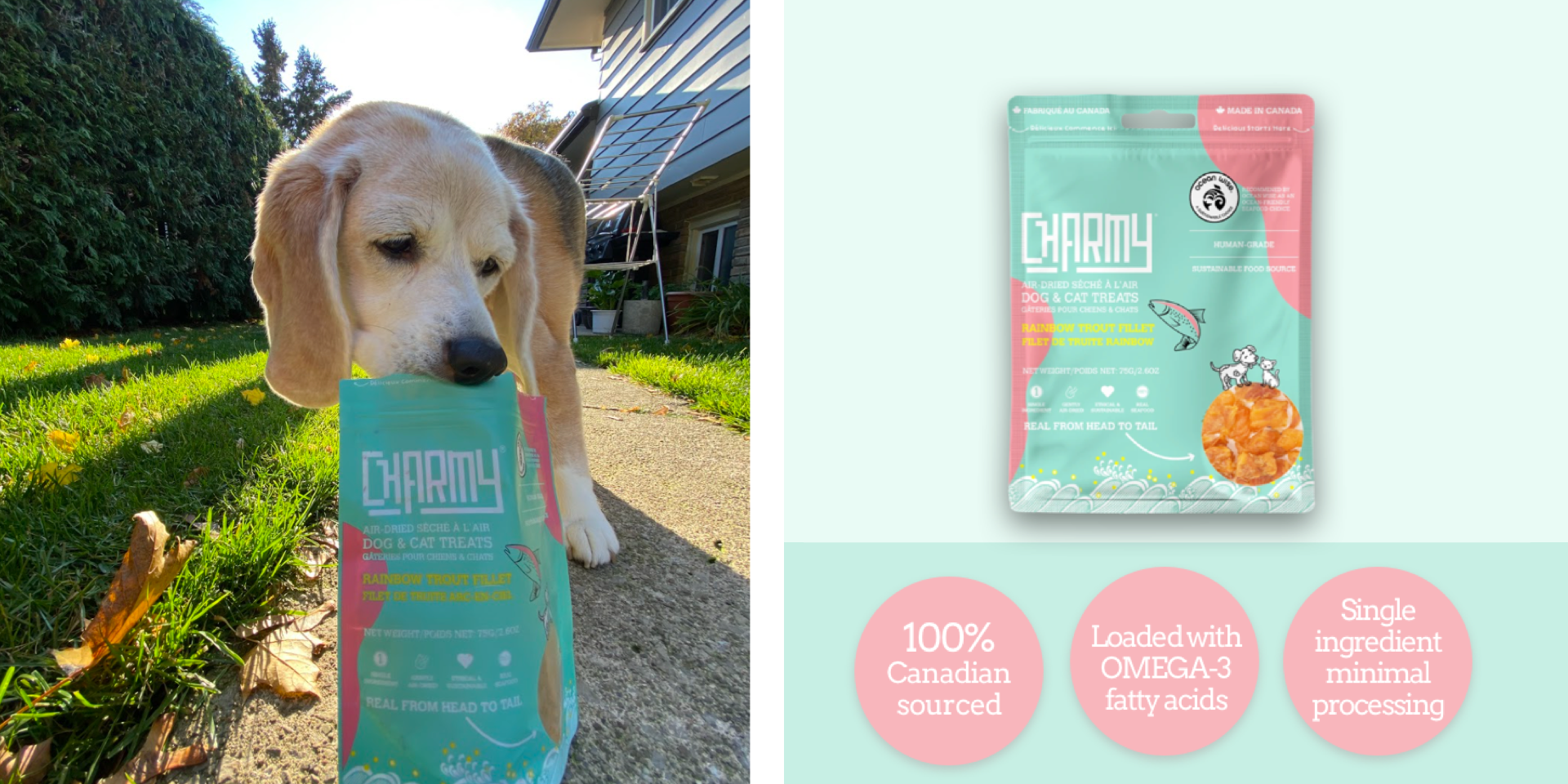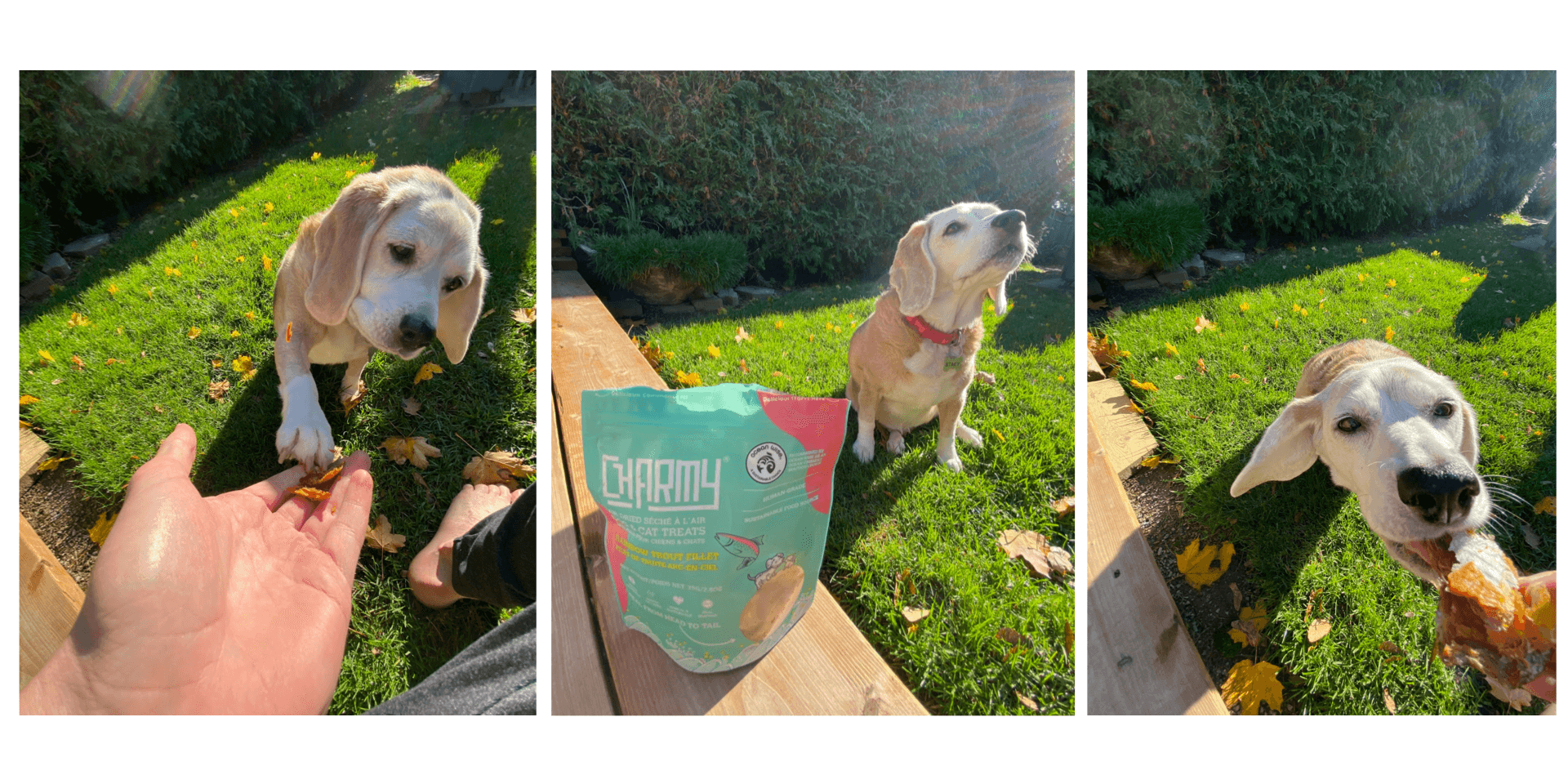5 Amazing Tips for Walking a Dog That Pulls on the Leash
Wondering how to make your dog behave well on a leash? “Leash manners” is a challenging thing and is one of the most common complaints among dog parents and pedestrians. Behaving well on the leash is an important skill to teach your dog. You will definitely value this new skill every time you take your dog out for a walk!
Throughout the article, we may share some of our favourite products through a link sending you over to Amazon called an affiliate link. This means that, at zero cost to you, we will earn an affiliate commission if you click through the link and make a purchase. We pride ourselves on wanting to develop Ollie + Stace as a trusted brand and resource for you so we will never send you to products we do not believe in.
Top Tips to Consider When Walking your Dog on the Leash
Leash training is essential if the two of you are to enjoy walks and adventures together… We know we do! Here are our 5 tips on how to train and a few bonus pointers if your dog pulls on a leash:
1. Start with equipment.
An important thing to make sure of is that you must have the right equipment. Choosing the right type of leash, collar, or harness plays a significant role in managing the pulling behaviour.
A chest-led harness is the perfect equipment to help modify your dog’s pulling behaviour paired with a 4-6ft non-retractable leash for fast correction. Remember that equipment can be really helpful in stopping leash pulling but is not a sole replacement for leash training.
We like to look for the following in leashes: nice and strong, comfortable for your hands, and aesthetics. Here’s a cute reliable favourite from Amazon.
2. Show them leash pulling is an unpleasant behaviour
When we’re on the walk, we can't allow our dogs to pull at all on the leash. As soon as they start pulling, stand still until the leash relaxes. When the leash is sufficiently relaxed, continue on your walk. Your dog will probably give you some funny looks at the start but soon will realize that what they are doing is not pleasing behaviour. Simply, do not allow your pooch to move forward in the direction they are pulling until there is a relaxed leash.
3. Where to practice leash training?
When you start out, practice leash training in an area with as few distractions as possible. Once your furry pal is comfortable, repeat the leash training in many different settings, and at many different places. Keep leash training sessions short, frequent, and don’t exhaust your dog. Keep leash training fun, dynamic, and increasingly challenging (ie busier areas) to captivate your dog’s interest.
4. Make it a positive experience!
Dogs learn best by positive reinforcement techniques. Punishments and yelling at them will only have negative effects. Make leash training a positive experience filled with praises, affirmations and rewards. If the leash training experience is pleasant, your dog will love it. If it’s uncomfortable, your furry pal will show a little resistance.
5. Practice makes perfect.
Practice, practice, practice. When your dog is on the leash, you need to show a lot of patience. Your four-legged friend should be relaxed enough to walk on a loose leash. Be consistent to reward positive behavior and stop bad behaviour immediately. Your dog will naturally become more comfortable when they're taught the difference between good and bad behaviour.
Bonus Tip:
Ensure you are providing your dogs with enough mental stimulation
Dogs need physical and mental stimulation for burning pent up energy and keeping their muscles strong. For best results, give your dog plenty of play (tug-o-war, treat hunt, hide and seek, the list goes on...) before they walk with you on the leash. For your pooch to behave and not act out with all the distractions they have on a walk, it takes a ton of self-control. We just have to teach them a few basics.
Final Thoughts
It's worth keeping in mind that pulling is a natural ancestral behaviour for dogs; they need time for learning and self-control. Remember that you need to be consistently firm and patient with your dog but not harsh. With enough practice and repititions, they will surely turn out the most well-behaved, non-pulling walking companion on the block.
Praising your pooch with small training treats during leash training is rewarding for you and them. If you are looking for a recommendation on a delicious and nutritious training treat, this checks many if not all of our boxes; delicious to your pet, wild-caught, local, and more functional in nature with the omegas involved than other high heat processed treats.
See for yourself on Amazon here. Practice good habits!
PST… always be prepared with more than enough poopy bags! Our favourites come with a lavender scent and did we mention they are made from vegetables and they only use recycled materials in their packages and inserts… AND they can be put in the green bin!
Check this amazing Canadian company on Amazon here. 🌎
Hope you enjoyed reading this article! Did you find this article helpful? Feel free to share your thoughts and questions.
Happy Walking
-Lauren, Brandon, & Sonya from Ollie + Stace

